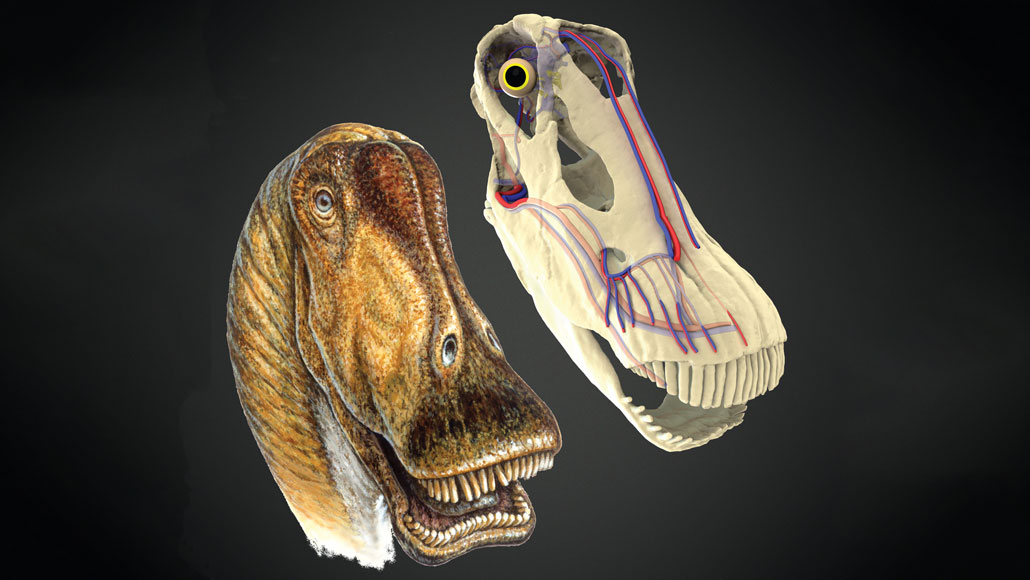Big dinosaurs kept cool thanks to blood vessel clusters in their heads
The giant animals evolved different strategies for cooling their blood and avoiding heatstroke

To avoid heatstroke, the long-necked giant Diplodocus (illustrated) may have panted, moving air back and forth through its mouth and nose to keep its blood cool (veins are in blue, arteries in red).
Life restoration by Michael Skrepnick. Courtesy of WitmerLab at Ohio University







